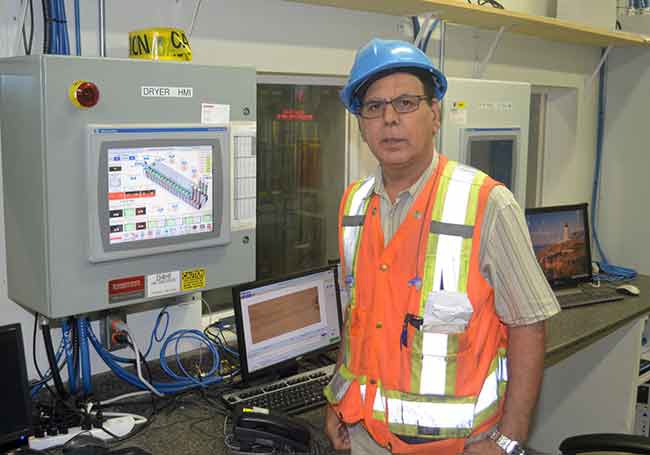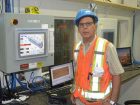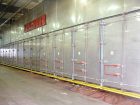
Features
Mills
Sawmilling
Breaking bottleneck at Richmond Plywood
December 15, 2015 - When Richmond Plywood was founded in 1956 by 300 shareholders ponying up $5,000 each, one must assume that the investors saw a bright future for the plywood business in Canada
December 15, 2015 By Andrew Snook
 Richmond Plywood plant superintendent Bill Sanghara discusses upgrades made to the plant’s drying operations. Richmond Plywood was founded in 1956
Richmond Plywood plant superintendent Bill Sanghara discusses upgrades made to the plant’s drying operations. Richmond Plywood was founded in 1956Fast-forward nearly 60 years later and the Richmond, B.C.-based, cooperative generates approximately $100 million in sales annually, producing a wide range of panel products and thicknesses from balsam, spruce, hemlock and fir.
The highly-specialized plywood operation offers a diverse value-added product mix including medium-density overlays (MDOs) and high-density overlays (HDOs) for concrete forming, paint grade MDOs for signage, specialty sanded panels and Marine grade; in addition to standard and select structural sheathing products.
To keep the operation competitive and to ensure it can efficiently offer a wide variety of options to its customers, the company has invested heavily in modernizing the plant over the years.
According to Terry Davis, vice-president of sales and marketing for Richmond Plywood, those investments have been well worth their costs.
“We’ve spent millions in modernizing,” Davis says. “Not only have we achieved great products because of them, but great product diversification as well.”
So when Richmond Plywood had to respond to a bottleneck in its drying operation stemming from increasing demand, the company was comfortable investing in new veneer dryer technology.
The company’s board of directors approved a $10-million upgrade to the plywood plant’s dryers in the fall of 2013, and construction started in May 2014.
After weighing out all the available options, the company ended up deciding on purchasing a steam-heated USNR six-deck, 14-section veneer dryer to solve its bottleneck issues.
One of the biggest challenges during the construction phase was figuring out how to fit the new dryer into the plant while creating minimal interruption to its production, which was done successfully.
The other major hurdle was that the plant did not have a general manager at the time of the installation, which meant having to rely heavily on USNR for the engineering and project management for both the production flow reconfiguration and the new dryer supply.
Fortunately, the dryer upgrade went incredibly smooth and did not encounter any serious issues all the way to the point of its commissioning in December 2014, according to Bill Sanghara, plant superintendent for Richmond Plywood.
Dryer features
The new dryer system is equipped with six decks of rolls on 1.5-foot vertical centres that are 15 feet in length. It has 14 heated sections and three cooling sections built with heavy stainless 3/16” plate seal welded insulated four-inch floor panels.
It also features automatic dryer exhaust control, cooler pressure balance control, an insulated floor, and rectangular and tapered jet nozzles that extend horizontally across the dryer above and below the path of veneer travel on each deck.
Positive returns
Both Sanghara and Davis agreed that the efficiency of the new dryer system has been a fantastic investment, and it already appears to be offering a very positive return on investment.
The new dryer system stands to increase the plant’s production capacity by about 10 per cent, which must be music to the ears of the 277 shareholders that currently own a stake in the company, and its 310 employees.
So what’s next for Richmond Plywood?
The plant’s management is hoping to invest further in other automated processes to increase production and efficiency levels. Onward and upward.
Print this page

